We believe businesses, start-ups, nonprofits and grassroots organizations shouldn’t need to spend thousands of dollars purchasing research reports. Socialbrite.org has joined with our partners at Socialmedia.biz to assemble the following list of free reports bearing on the social media, public interest, technology, Internet use and mobile.
The first section, Social media & social networks, is below. Use the tabs or click through this list to see the reports in the other sections. And please add your own pointers at the bottom of any section:
Listening 2.0 White Paper
Converseon
20 pages, 2010
Converseon
20 pages, 2010
A new generation of listening solutions (Listening 2.0) are evolving to help meet challenges that organizations need to address in order to use social media at enterprise scale. This white paper clarifies how leading brands address these key challenges as they evolve toward enterprise social enablement.
Download whitepaper (PDF) after submitting form
Media Monitoring: The Complete Guide
William J. (Bill) Comcowich, CyberAlert
26 pages, 2010
William J. (Bill) Comcowich, CyberAlert
26 pages, 2010
This whitepaper provides information about how to choose the most effective and least costly media monitoring approach for your organization. It covers both news monitoring and social media monitoring and includes guidelines for using free media monitoring services.
Generations 2010
Kathryn Zickuhr, Pew Research Center
29 pages, December 2010
Kathryn Zickuhr, Pew Research Center
29 pages, December 2010
This is the second report by the Pew Research Center’s Internet & American Life Project exploring how different generations use the internet. The Pew Internet Project’s “Generations” reports make the distinction between Younger Boomers and Older Boomers because enough research has been done to suggest that the two decades of Baby Boomers are different enough to merit being divided into distinct generational groups.
8% of online Americans use Twitter
Aaron Smith, Senior Research Specialist, Pew Research Center’s Internet & American Life Project
Lee Rainie, Director, Pew Research Center’s Internet & American Life Project
20 pages, December 2010
Aaron Smith, Senior Research Specialist, Pew Research Center’s Internet & American Life Project
Lee Rainie, Director, Pew Research Center’s Internet & American Life Project
20 pages, December 2010
Eight percent of the American adults who use the Internet are Twitter users. Using Twitter is particularly popular with young adults, minorities and those who live in cities. This is the first-ever survey reading from the Pew Research Center’s Internet & American Life Project that exclusively examines Twitter users.
Download study (PDF)
Is Your Acceptable Use Policy Social Media-proof?
M86 Security
7 pages, December 2010
M86 Security
7 pages, December 2010
This paper provides guidance on how to update an Acceptable Use Policy to accommodate the increasing popularity and use of social media in the business environment. It identifies some of the complexities involved in creating and managing an AUP, especially with evolving Web 2.0 technologies, and demonstrates that a successful AUP is more than a simple list of dos and don’ts.
Download whitepaper (PDF)
The Forrester Wave: Listening Platforms, Q3 2010
Zach Hofer-Shall
with Suresh Vittal, Emily Murphy, and Michael J. Grant
13 pages, July 2010
Zach Hofer-Shall
with Suresh Vittal, Emily Murphy, and Michael J. Grant
13 pages, July 2010
During the past year, listening platforms continued their evolution beyond basic brand monitoring tools into integral technologies that inform a variety of marketing and business functions like campaign measurement, market research, customer support and sales enablement.
Download report (PDF)
The Future of Social Relations
Janna Quitney Anderson, Elon University
Lee Rainie, Pew Research Center’s Internet & American Life Project
27 pages, July 2, 2010
Janna Quitney Anderson, Elon University
Lee Rainie, Pew Research Center’s Internet & American Life Project
27 pages, July 2, 2010
The social benefits of Internet use will far outweigh the negatives over the next decade, according to experts who responded to a survey about the future of the internet. They say this is because email, social networks, and other online tools offer low‐friction opportunities to create, enhance and rediscover social ties that make a difference in people’s lives. The Internet lowers traditional communications constraints of cost, geography and time; and it supports the type of open information sharing that brings people together.
The Benefits and Risks of Web 2.0
Osterman Research, Inc., and M86 Security
12 pages, June 2010
Osterman Research, Inc., and M86 Security
12 pages, June 2010
This whitepaper focuses on both the benefits and risks associated with the use of the Web, Web 2.0 applications and social networking tools. It discusses the recommendations for improving an organization’s security posture with regard to use of these tools.
Download whitepaper (PDF)
The Social Customer Engagement Index
Survey by The Social Customer & The Society of Consumer Affairs Professionals
Analysis by Brent Leary
37 pages, June 2010
Survey by The Social Customer & The Society of Consumer Affairs Professionals
Analysis by Brent Leary
37 pages, June 2010
As part of their effort to provide readers with information to enhance their customer service/engagement activities, a survey was conducted to gain insight into how organizations use social channels to engage customers from a service perspective. This whitepaper shares the results of the June 2010 survey of community members.
Face the Facts
By Caroline Fox, Abi Reynolds, Dr. Stephan Weibelzahl, Javin Li
Mulley Communications
35 pages, June 2010
By Caroline Fox, Abi Reynolds, Dr. Stephan Weibelzahl, Javin Li
Mulley Communications
35 pages, June 2010
This report presents the findings of a research study looking at how people in Ireland currently use Facebook. By observing the participants’ general use of Facebook, then using eye-tracking data, they analyzed participants’ behavior when they were engaged with advertising and media within this environment.
Enabling the Secure Use of Facebook
Reaping the Benefits of Social Networking Applications in a Secure Manner
Palo Alto Networks
3 pages, 2010
Reaping the Benefits of Social Networking Applications in a Secure Manner
Palo Alto Networks
3 pages, 2010
This report is a practical guide for how to safely enable Facebook while still protecting the business. You’ll learn the ins and outs of Facebook; the benefits of safely enabling applications and how to enforce the proper policies and stop threats.
Government Online: The Internet gives citizens new paths to government services and information
Aaron Smith
Pew Internet
47 pages, April 27, 2010
(Recommended)
Aaron Smith
Pew Internet
47 pages, April 27, 2010
(Recommended)
As government agencies at all levels bring their services online, Americans are turning in large numbers to government websites to access information and services. Fully 82% of Internet users (representing 61% of all American adults) looked for information or completed a transaction on a government website in the 12 months preceding this survey. Most of these “online government users” exhibit a relatively wide range of behaviors: the typical online government user engaged in four of these activities in the past year.
2010 Social Media Matters Study
Elisa Camahort Page
BlogHer co-founder and COO
25 pages, April 2010
Elisa Camahort Page
BlogHer co-founder and COO
25 pages, April 2010
BlogHer and iVillage teamed up with co-sponsors Ketchum and Nielsen on the 2010 Social Media Matters Study, which explores the use of social media by women.
Social Marketing Analytics: A New Framework for Measuring Results in Social Media
By Jeremiah Owyang, Altimeter Group
John Lovett, Web Analytics Demystified
With Eric T. Peterson, Charlene Li and Christine Tran
27 pages, April 22, 2010
(Recommended)
By Jeremiah Owyang, Altimeter Group
John Lovett, Web Analytics Demystified
With Eric T. Peterson, Charlene Li and Christine Tran
27 pages, April 22, 2010
(Recommended)
The document presents recommendations by Web Analytics Demystified and Altimeter Group for measuring social media. The goals for this work are to elevate awareness and activity in measuring social media by offering a working framework. By setting reasonable and realistic expectations, clients and companies around the world can begin to make better, more objective decisions regarding their own investment in these emerging channels.
Advertising Effectiveness: Understanding the Value of a Social Media Impression
Jon Gibs, The Nielsen Co.
Sean Bruich, Facebook
12 pages, April 2010
Jon Gibs, The Nielsen Co.
Sean Bruich, Facebook
12 pages, April 2010
This study surveyed more than 800,000 Facebook users. Results showed an increase in ad recall, brand awareness and purchase intent when users see friends who have become fans of the brand in the ad. The authors suggest that social ads perform better because they are a more personal, useful and trusted form of advertising. The research also revealed the high impact of campaigns that leverage a combination of paid media and earned media (i.e., ads drive users to become Facebook fans, and in turn users who become fans drive their friends to become fans).
Download report (PDF) after you sign up
A new way to measure word-of-mouth marketing
Jacques Bughin, Jonathan Doogan and Ole Jørgen Vetvik
McKinsey & Co.
April 2010
Jacques Bughin, Jonathan Doogan and Ole Jørgen Vetvik
McKinsey & Co.
April 2010
This article looked at the impact of word-of-mouth-marketing for businesses and how companies can take better advantage of buzz. The article also shows how many marketers are spending millions of dollars on elaborate advertising campaigns when often what’s really needed to help influence consumers is a “word-of-mouth recommendation from a trusted source” which “cuts through the noise” of traditional marketing methods.
Social CRM: The New Rules of Relationship Management
R “Ray” Wang and Jeremiah Owyang
Altimeter Group
With Charlene Li and Christine Tran
22 pages, March 5, 2010
R “Ray” Wang and Jeremiah Owyang
Altimeter Group
With Charlene Li and Christine Tran
22 pages, March 5, 2010
This document serves as a starting point, checklist and reference guide to real-world entry points for Social CRM projects. The use cases represent an amalgamation of over 100 conversations with organizations pioneering Social CRM initiatives.
The Future of the Internet
Janna Quitney Anderson, Elon University
Lee Rainie, Pew Internet & American Life Project
48 pages, Feb. 19, 2010
(Recommended)
Janna Quitney Anderson, Elon University
Lee Rainie, Pew Internet & American Life Project
48 pages, Feb. 19, 2010
(Recommended)
A survey of nearly 900 Internet stakeholders reveals new perspectives on the way the Internet is affecting human intelligence and the ways that information is being shared and rendered. The Web-based survey gathered opinions from prominent scientists, business leaders, consultants, writers and technology developers. This publication is part of a Pew Research Center series that captures people’s expectations for the future of the Internet.
The Razorfish Digital Brand Experience Report 2009
Razorfish.com
65 pages, 2009
(Recommended)
Razorfish.com
65 pages, 2009
(Recommended)
The Razorfish Digital Brand Experience Report explores how consumers interact with brands online. Their findings will provide a new perspective on how technology is fundamentally altering the evolving relationship between brands and consumers, mostly for the better.
Download report (PDF)
Real-Time Search and Discovery of the Social Web
David Spark
20 pages, Dec. 10, 2009
(Recommended)
David Spark
20 pages, Dec. 10, 2009
(Recommended)
Each day, users of the social web post more than 230 million pieces of content. They’re sharing videos, pictures, tweets, Facebook status updates, blog posts, comments, reviews and more with their immediate community and the greater social web. Given the short lifespan of much of this information, traditional search engines have historically ignored publishing a significant portion of this content. This gap in search engine reporting has opened up new opportunities for real-time search and discovery engines. On a minute-by-minute or even second-by-second basis, these new search engines digest and make sense of what people are talking about across the social web. But their autonomy from the traditional search engine players is about to dissipate. The real-time search landscape is changing as both Google and Microsoft’s Bing form real-time search partnerships, expanding their definition of searchable content to include the publication of dynamic social web content.
Cisco CSR Report 2009
228 pages, Dec. 7, 2009
228 pages, Dec. 7, 2009
This report documents Cisco’s corporate social responsibility (CSR) efforts. It sets forth Cisco’s CSR philosophy and describes the progress the company has made in initiatives directed at improving the health, welfare and sustainability of the communities Cisco is involved with worldwide. The report incorporates data and feedback received from employees, shareholders, customers, private, government and nongovernmental organizations Cisco partners with and other stakeholders.
The New Female Consumer
The Rise of the Real Mom
Marissa Miley and Ann Mack
28 pages, Nov. 16, 2009
The Rise of the Real Mom
Marissa Miley and Ann Mack
28 pages, Nov. 16, 2009
This Advertising Age and JWT whitepaper explores what multiple generations of American women want when it comes to family, work and life in the 21st century. It focuses in depth on Generation X (ages 30 to 44) and millennial (ages 18 to 29) mothers and how they differ from their older counterparts. It also examines how marketers can and should improve communications that target this demographic.
2010 Predictions: Will social media reach ubiquity?
Jennifer Leggio
ZDNet
9 pages, Oct. 27, 2009
Jennifer Leggio
ZDNet
9 pages, Oct. 27, 2009
The author asked members of her social network to predict what would happen in social media in 2010. The predictions are meant to provoke thoughts and come from a mix of thought leaders, entrepreneurs, and folks who get their hands dirty every day dealing with social media for their companies. Predictions range from general social media to enterprise 2.0, government 2.0, security, public relations and location-aware social networks. The overarching theme of most of the predictions say that 2010 is the year that social media will just be, rather than serving as a shiny new toy.
Twitter and Status Updating
Susannah Fox, Kathryn Zickuhr, Aaron Smith
Pew Internet & American Life Project
16 pages, Oct. 21, 2009
Susannah Fox, Kathryn Zickuhr, Aaron Smith
Pew Internet & American Life Project
16 pages, Oct. 21, 2009
Nineteen percent of Internet users now say they use Twitter or another service to share updates about themselves, or to see updates about others. This represents a significant increase over previous surveys in December 2008 and April 2009, when 11 percent of Internet users said they use a status-update service.
Communicate Better with Social Media Marketing
This ebook is intended to help you develop the right strategy, discover the best sites for your industry and use them to get the results you want. Topics include closer relationships with your customers; more qualified traffic; ability to test market a new ideaeedback from the public; reputation control and improved ROI.
Enterprise Microblogging Whitepaper
Ross Mayfield
11 pages, September 2009
Ross Mayfield
11 pages, September 2009
Knowledge workers find themselves drowning in email and interrupted by IM, yet spend one day per week searching for people and information within an organization. It’s hard to ask questions when you don’t know who to ask; and hard to get answers without interrupting others. But over the last two years, a new model of communication and knowledge discovery has emerged on the Web. Microblogging, as popularized on the web by Twitter, is increasingly deployed as an enterprise solution, private for companies. This whitepaper provides an introduction to microblogging, how it is adapted for private enterprise use, how it is different from email and IM, how to foster adoption and the benefits of implementation.
Engaging the New Influencers
Third Annual New Media Academic Summit
18 pages, September 2009
Third Annual New Media Academic Summit
18 pages, September 2009
Edelman convened more than 100 professors of communications, journalism, business and public relations from across North America and Europe in Washington, DC, in June 2009 to discuss how companies, organizations and media effectively engage their stakeholders through social media. The sessions were led by more than 50 practitioners who guide digital communications strategies within leading organizations. This report provides best practices and actionable insights into how to engage employees, consumers, investors, regulators and media.
Getting Over Social Media Marketing Paralysis for B2B
Kimberly McCabe
Oshyn
33 pages, September 2009
Kimberly McCabe
Oshyn
33 pages, September 2009
Many companies are aware that social media has become critically important to engaging audiences and promoting online “presence” while some wonder how to approach their C-level executives and prove that it is not all hype. With so many ways to engage in social media, how can they get buy-in and begin execution with so many different venues and tools available? Staying on the sidelines and becoming a latecomer might make it more difficult to create a convincing social presence. Put the options aside and see how B2B can step into the world of social media by developing a simple strategy and using a few simple tools.
Download whitepaper (registration required)
Essential Online Public Relations and Marketing Skills
Eric Schwartzman, iPressroom
Tom Smith, Trend Stream
Don Spetner, Korn/Ferry International
Barbara McDonald, Public Relations Society of America
13 pages, Aug. 10, 2009
Eric Schwartzman, iPressroom
Tom Smith, Trend Stream
Don Spetner, Korn/Ferry International
Barbara McDonald, Public Relations Society of America
13 pages, Aug. 10, 2009
This report provides insights into the specific strategic and tactical digital communications skills that employers are seeking from public relations and marketing job candidates. The research report is intended to help public relations, corporate communications and marketing professionals better understand and appreciate how organizations are integrating online communications into their business practices, and what online communication skills they need to acquire to be competitive in today’s job market.
Social Networking for Businesses & Associations
Christopher Carfi, Leif Chastaine
Cerado
13 pages, August 2009
Christopher Carfi, Leif Chastaine
Cerado
13 pages, August 2009
What is social networking? Why does it matter? Isn’t “social networking” just for high school kids? How can my organization get closer to customers/members using social networking? The report offers examples of how financial services firms, associations and other organizations are using social networking today.
Download report (PDF)
20 Expert Tips on Running a Contest Powered by Social Media
David Spark
6 pages, Aug. 10, 2009
David Spark
6 pages, Aug. 10, 2009
Looking to run a contest, but you’re worried nobody will participate? Or worse, that something could go wrong? The author reached out to five contest production specialists — Natalie Aldern, ibeatYou; Anne Heestand, Brickfish; Alex Linebrink, Tweet-A-Prize!; Giancarlo Massaro, AnyLuckyDay; and Linda Neumann, Brilliant Marketing Ideas — for their advice on how to run a successful social media-enabled contest.
Public Relations Leads Social Media Engagement at Most Organizations
Eric Schwartzman
Schwartzman & Associates
Aug. 10, 2009
Eric Schwartzman
Schwartzman & Associates
Aug. 10, 2009
Public relations professionals are taking the lead in managing the organization’s use of social media communications channels, and social media skills are nearly as important as traditional media relations skills when searching for and hiring public relations professionals.
20 Expert Tips on Running a Contest Powered by Social Media
David Spark
Spark Media Solutions, LLC
6 pages, Aug. 9, 2009
David Spark
Spark Media Solutions, LLC
6 pages, Aug. 9, 2009
Looking to run a contest, but you’re worried nobody will participate? Or worse, that something could go wrong? This article provides great tips from experts on how to run a successful social media-enabled contest. Download the report to learn their prize winning formulas.
ENGAGEMENTdb: Ranking the Top 100 Global Brands
Charlene Li, Altimeter Group
Ben Elowitz, Wetpaint
19 pages, July 2009
(Recommended)
Charlene Li, Altimeter Group
Ben Elowitz, Wetpaint
19 pages, July 2009
(Recommended)
Wetpaint and Altimeter Group go beyond surface case studies to measure the true financial value of social media. The researchers conducted their study based on the world’s 100 most valuable brands as measured by BusinessWeek / Interbrand “Best Global Brands 2008” rankings. The writers evaluate how well they are engaging their consumers using social media and how that engagement correlates with their most important financial metrics: revenue and profit. Finally, the authors introduce a playbook for how the best are succeeding in social media so that you, too, can engage and succeed.
14 Successful Techniques for Building Your Industry Voice With Social Media
David Spark
Spark Media Solutions
16 pages, July 12, 2009
(Recommended)
David Spark
Spark Media Solutions
16 pages, July 12, 2009
(Recommended)
Get inspired to capitalize on social media for your business with these successful tales of building industry voice.
Fluent: The Razorfish Social Influence Marketing Report
Razorfish
58 pages, July 2009
(Recommended)
Razorfish
58 pages, July 2009
(Recommended)
What you say — or your agency says — about your brand or your product matters less than what your customers say about you. And what matters most to them is what your brand does. Does your product delight them? Does your service annoy them? Are you useful and new, or boring and
difficult? Forget the funny tagline or the award-winning TV spot — what does your brand do for your customers? If you’re interested in brand innovation, then read this forward-looking report.
difficult? Forget the funny tagline or the award-winning TV spot — what does your brand do for your customers? If you’re interested in brand innovation, then read this forward-looking report.
Report page (click the PDF icon to download a copy for printing)
Digital Platforms and Technologies for Publishers: Implementations Beyond “eBook”
Steve Paxhia & Bill Trippe
Gilbane Group
148 pages, May 29, 2009
Steve Paxhia & Bill Trippe
Gilbane Group
148 pages, May 29, 2009
Digital technology has revolutionized many sectors of the media business. Apple’s iPod has changed the way that people buy and listen to music. Google has drastically changed the way that people find and consume information. YouTube enables both individuals and organizations to bring their messages and products to the masses in a much more vivid fashion. WebMD brings new ways for consumers to access medical information, while PubMed presents a comprehensive index of biomedical articles for practitioners and scientists. Book publishers are now at the threshold of a similar revolution as they plan their next generation of products, and the building blocks for change are largely in place. This study surveyed a wide range of book publishers and related service companies from all market segments including trade/children, reference, professional, school, and higher education.
Download report (PDF — registration required)
Winning in a Web 2.0 World: Metrics-Driven Success
Marketing Operations Partners
16 pages, May 28, 2009
Marketing Operations Partners
16 pages, May 28, 2009
YouTube, MySpace, Facebook, Linked-In, blogs, podcasts and more. Today’s social media marketing landscape is growing at an exponential rate. This guide helps you navigate it effectively. From definitions of common terms to social media marketing best practices, this white paper focuses on the nuances of measuring Web 2.0 technologies.
Social Media Marketing Industry Report
Michael Stelzner
WhitePaperSource Newsletter
26 pages, March 2009
Michael Stelzner
WhitePaperSource Newsletter
26 pages, March 2009
This report polled 900 marketers to determine how marketers are using social media today. In this report you’ll find the top social media marketing questions marketers want answered; how much time marketers are investing in social media; the benefits of social media; the top social media tools, and more.
Using Social Media eBook
Cece Salomon-Lee
PR Meets Marketing
31 pages, February 2009
Cece Salomon-Lee
PR Meets Marketing
31 pages, February 2009
The purpose of this ebook is to provide a quick guide for using social media. The ebook offers a quick guide to get you started and shows how to enhance your public relations and marketing programs.
Corporate Trends in Social Media Marketing
Michael Lewis, Awareness, Inc.
13 pages, February 2009
Michael Lewis, Awareness, Inc.
13 pages, February 2009
Chris Brogan, president of New Marketing Labs, sent out a survey asking those involved in social media a few questions about their current corporate social media marketing initiatives. More than 600 people participated, and along with the help of Mike Lewis, VP of Marketing at Awareness, Inc., an ebook was created from the survey results as well as from interviews of some key companies successfully using social media.
Download report (registration required)
The Forrester Wave: Listening Platforms
Suresh Vittal, Zach Hofer-Shall, Christine Spivey Overby and Emily Bowen
Forrester Research
12 pages, Jan. 23, 2009
Suresh Vittal, Zach Hofer-Shall, Christine Spivey Overby and Emily Bowen
Forrester Research
12 pages, Jan. 23, 2009
Visible Technologies was among the select companies that Forrester invited to participate in its study. In this evaluation, Visible Technologies was cited as a “strong performer.” The findings were based on vendors’ current offering, strategy and market presence.
Download report (PDF) after registration
Digital Outlook Report 2009
Razorfish
180 pages, January 2009
(Recommended)
Razorfish
180 pages, January 2009
(Recommended)
A wide-ranging set of essays from the Razorfish team on the outlook for social influence marketing in the new digital economy. Chapters include “Digital Ad Spending,” “Search Outlook 2009,” “Email Marketing” and “The Future of Retail.”
Report page (click on GET REPORT to download)
Social Networking Adoption in the Enterprise
Christopher S. Rollyson
9 pages, Jan. 17, 2009
Christopher S. Rollyson
9 pages, Jan. 17, 2009
A report from the 2009 Miami Social Networking Conference, showing diverse enterprise adoption and success of social media initiatives at such companies as Microsoft, Opera, IBM, Ford, SAP, Dow Jones, Salesforce, jetBlue, Sun Microsystems and others.
The Collective Is the Focus Group: Revolutionizing ROI Through “Return on Insight”
David Armano
Critical Mass
7 pages, Jan. 8, 2009
David Armano
Critical Mass
7 pages, Jan. 8, 2009
What’s the return on investment for a particular initiative your organization may be contemplating? Right now, companies that have served as pillars of financial growth are finding themselves in situations we could have never predicted years ago. This points to a flaw in the predictive model — that it’s not easy to predict a likely outcome, and yet we try to predict the return on investment for initiatives to determine what gets funded and what doesn’t.
The Fusion of Search and Social Media
OneUpWeb
9 pages, January 2009
OneUpWeb
9 pages, January 2009
Search has changed, and this whitepaper argues that incorporating social media into your search marketing efforts is no longer a luxury but a necessity if you want to be found online. Download this free paper to read about the new age of online marketing, where search and social media are one in the same.
Adults and Social Network Websites
Amanda Lenhart
Pew Internet & American Life Project
17 pages, January 2009
Amanda Lenhart
Pew Internet & American Life Project
17 pages, January 2009
The share of adult internet users who have a profile on an online social network site has more than quadrupled in the past four years — from 8% in 2005 to 35% now. Still, younger online adults are much more likely than their older counterparts to use social networks, with 75% of adults 18-24 using these networks, compared to just 7% of adults 65 and older. At its core, use of online social networks is still a phenomenon of the young.
Community Banker’s Guide to Social Network Marketing
Jesse Torres
70 pages, December 2008
Jesse Torres
70 pages, December 2008
The Community Banker’s Guide to Social Network Marketing addresses social networks, user demographics and the role of social networks within the greater sphere of social media. Also addressed at length is the development of viral marketing programs, consumer advocacy, conversational marketing, metrics and common pitfalls. Torres is president and chief operating officer of Security Savings Bank in Henderson, Nev.
Social Media Marketing: The Right Strategy for Tough Economic Times
Awareness, Inc.
12 pages, 2008
Awareness, Inc.
12 pages, 2008
This whitepaper explores the many ways social media marketing can play a part in how your brand survives and thrives throughout tough economic times. The report describes how you can leverage social media and social networking to improve your marketing, build your brand and build better customer relationships.
Report page (registration required)
Feed: The Razorfish Consumer Experience Report
Razorfish
84 pages, Oct. 28, 2008
(Recommended)
Razorfish
84 pages, Oct. 28, 2008
(Recommended)
Are widgets the TV sets of the future? Does social media impact consumer purchasing? Do people really use Twitter? These are just some of the questions FEED: The Razorfish Consumer Experience Report addresses.
Integrating Social Media in Your Marketing Mix: A case for social media marketing in a recession
Awareness, Inc.
10 pages, 2008
Awareness, Inc.
10 pages, 2008
This whitepaper makes the case for using social media marketing during tough economic times. Interactive and social media marketing strategies will play a part in how your brand survives and thrives. The report describes how you can leverage social media such as blogs, forums, ratings and social networking media to improve your marketing and build better customer relationships regardless of the economy.
Download report (registration required)
New Media, New Influencers & Implications for Public Relations
Society for New Communications Research
42 pages, August 2008
(Recommended)
Society for New Communications Research
42 pages, August 2008
(Recommended)
Marketers and public relations professionals are confronted with an astounding array of new communications channels. Internet-based social media tools like blogs, podcasts, online video and social networks are giving voice to the opinions of millions of consumers. While mainstream media continues to play a vital role in the dissemination of information, even these traditional channels are increasingly being influenced by online conversations. The “new influencers” are beginning to tear at the fabric of marketing as it has existed for 100 years, giving rise to a new style of marketing that is characterized by conversation and community. This report examines how influence patterns are changing and how communications professionals are addressing those changes by adopting social media.
Download report (PDF)
The Social Web Analytics Ebook 2008
Philip Sheldrake
Racepoint Group
105 pages, July 1, 2008
(Recommended)
Philip Sheldrake
Racepoint Group
105 pages, July 1, 2008
(Recommended)
This ebook gives a brief overview of the characteristics of the Social Web, but that’s not its primary purpose. The ebook is an introduction to Social Web Analytics, how it can be applied, the key vendors and their services, and considerations for your organization’s procurement of analytics services.
Collaboration and Social Media
Geoffrey Bock and Steve Paxhia
Gilbane Group
123 pages, June 2008
(Recommended)
Geoffrey Bock and Steve Paxhia
Gilbane Group
123 pages, June 2008
(Recommended)
This report shows how social media, based on “Web 2.0″ technologies, is approaching the tipping-point. First generation tools now in widespread use, such as text-oriented email, web sites, and shared workspaces, are soon to be supplemented by social media applications that incorporate blogs, wikis, social bookmarking, rich media, and other innovative technologies. The Gilbane research report predicts the transition from horizontal applications to vertical solutions, and offers a number of strategies to help companies with the transition. The report combines a national survey of marketing executives with in-depth case studies of ten companies and a comprehensive vendor catalog.
Download report (PDF — registration required)
Sales 2.0 — Leveraging Web 2.0 to Sell
Geoffrey James
4 pages, April 2008
Geoffrey James
4 pages, April 2008
How to use Web 2.0 technologies to help salespeople reduce the cost of sales, buyer risk and the amount of time necessary to close a deal.
Trust Economies: Investigation into the New ROI of the Web
Chris Brogan & Julien Smith
10 pages, March 7, 2008
Chris Brogan & Julien Smith
10 pages, March 7, 2008
We are suspicious of marketing. We don’t trust strangers as willingly. Buzz is suspect. It can be bought. Instead, consumers and business people alike are looking towards trust. We want our friends to tell us it’s good. We want someone we know to say we should look into it. Marketing spend might start at awareness, but in the Trust Economy, communities are king, and ROI stands for Return on Influence.
Belonging Networks
Bill Ganz
More Media Group, Inc.
227 pages, March 2008
(Recommended)
Bill Ganz
More Media Group, Inc.
227 pages, March 2008
(Recommended)
The 227-page manual pulls from numerous resources and puts the information into an easy-to-comprehend guide that will help companies develop their strategic plans and tactical maneuvers. The research manual contains information regarding how to monetize a social network; how to understand a C2C & C2B relationship; how to empower your brand evangelist; the 10 most beautiful social networks; user-generated psycho-graphic profiling, and more.
Social Networking: The New Face of Recruiting
Linda Briggs
5 pages, March 6, 2008
Linda Briggs
5 pages, March 6, 2008
Social networking sites aren’t just for fun. In what may be the future for college recruiting efforts, some 300,000 students now use a social networking site called Zinch specifically to network with colleges. On Zinch prospective students can enter a personal profile that gives colleges in-depth information well beyond grades and test scores. From the other side, Zinch says that more than 450 colleges and universities are using Zinch as a high-powered recruiting tool. Here’s a Q&A with Brad Ward, electronic communication coordinator for Butler University, on new methods for reaching prospective students.
Trust Economies: Investigation into the New ROI of the Web
Julien Smith and Chris Brogan
10 pages, March 2008
Julien Smith and Chris Brogan
10 pages, March 2008
In the early days, you built a baseball stadium, a store, a web app, and people flocked to it. Now what? We’re suspicious of marketing. We don’t trust strangers as willingly. Buzz is suspect — it can be bought. Instead, consumers and business people alike are looking to trust. We want our friends to tell us it’s good. We want someone we know to say we should look into it. Marketing spend might start at awareness, but in the Trust Economy, communities are king, and ROI stands for Return on Influence.
Download free ebook (PDF — click Download This)

Wave.3: Power to the People / Social Media Tracker
Universal McCann
80 pages, March 2008
(Recommended)
Universal McCann
80 pages, March 2008
(Recommended)
With Wave 3, Universal McCann’s global research into the impact of social media, the company surveyed 17,000 Internet users in 29 countries. Its findings were widely reported, especially around patterns of online usage, such as China having more bloggers than the United States, emerging markets leading the takeup of social media and the Japanese shunning photo sharing. (Universal McCann moved this report and now it can’t be found on its site; the slideshow is still available.)
Rise of the Participation Culture
Steve Borsch
Marketing Directions, Inc.
55 pages, Feb.11, 2008
(Recommended)
Steve Borsch
Marketing Directions, Inc.
55 pages, Feb.11, 2008
(Recommended)
A high-level trend overview for strategists, leaders and marketers on why the Internet and a new wave of Web applications have been embraced by a tech-savvy generation and spawned a culture of participation. The report offers a full range of examples of social media in use, explanation of the Internet as platform, participation applications, thoughts on what’s next and resources.
Social Media and Social Networking Starting Points
Chris Brogan
CrossTech Media
7 pages, Feb. 11, 2008
Chris Brogan
CrossTech Media
7 pages, Feb. 11, 2008
Social media and social networking can be a tricky thing for businesses and organizations to consider. If you’re looking to show your organization how to get into social media and social networking, here’s a downloadable document on starting points to open up the conversation.
Social Networking: Brave New World or Revolution from Hell? A Look at the Phenomenon of Social Networking and the Implications for Businesses
Message Labs
4 pages, January 2008
Message Labs
4 pages, January 2008
Learn the pros and cons of employee social networking, including how to forge new customer relationships. Also learn how social networking is raising new challenges for enterprise security, as online criminals are exploiting social networking’s openness and free-flowing information to launch highly targeted attacks on corporate networks.
Distributed influence: quantifying the impact of social media
Jonny Bentwood, Edelman
16 pages, January 2008
Jonny Bentwood, Edelman
16 pages, January 2008
This whitepaper outlines the thoughts and views of some key stakeholders who met in 2007 to discuss the issue of measuring online influence.
What Is Social Media?
Antony Mayfield
iCrossing
36 pages, Jan. 8, 2008
Antony Mayfield
iCrossing
36 pages, Jan. 8, 2008
Here’s a good overview of the definition of social media, why it’s important, and what some of the main iterations are (blogs, wikis, etc).
Download report (PDF)
The New Rules of Viral Marketing
David Meerman Scott
34 pages, January 2008
David Meerman Scott
34 pages, January 2008
In this free ebook, which the author expanded into a full book, Scott explores how “word of mouse” spreads your ideas for free. Along the way he offers tips on how to use YouTube videos for viral marketing and how to optimize your website.
Social Media Strategy: The Whitepaper of New Media
Michael K. Bailey
Mobasoft
3 pages, Nov. 15, 2007
Michael K. Bailey
Mobasoft
3 pages, Nov. 15, 2007
This whitepaper discusses how to leverage social media in a way that fits your needs and promotes your product or service.
Download whitepaper (PDF)
How to Web 2.0-enable your live event
David Spark
10 pages
David Spark
10 pages
The guide offers advice for event producers on how to extend the functionality of a live event by using the Social Web to create a content network with Web 2.0 tools and enabling conversation around it. In addition, it includes a checklist to make sure you haven’t forgotten anything. Spark Media Solutions provides end-to-end solutions for capturing and archiving live events through video and rich media.
Download guide (PDF)
Social Networking and the Employer’s Dilemma
Jonathan Naylor
Shoosmiths
6 pages, November 2007
Jonathan Naylor
Shoosmiths
6 pages, November 2007
Shoosmiths Solicitors and MessageLabs combine to bring you this legal guide to reducing the risks of online social networking. The whitepaper highlights some of the problem areas that cause employers most concern and provides guidance on how employers can take practical steps to avert the dangers.
Facebook: The social media revolution: A study and analysis of the phenomenon
Fabernovel Consulting
48 pages, Oct. 3, 2007
Fabernovel Consulting
48 pages, Oct. 3, 2007
This paper aims to provide better insight into Facebook, ranging from facts and details about the website’s growth to information about advertising, studies on its users’ behavior and suggestions of metrics for social media.
Social Networking, The Third Place, And The Evolution Of Communication
New Media Consortium
9 pages, 2007
New Media Consortium
9 pages, 2007
This whitepaper touches on concepts and ideas that are well established within the academic community. It deals not only with new technologies that have mediated communication in countless ways but also the very ways we communicate. Social networking is changing the ways in which people communicate both online and offline.
Never Ending Friending: A Journey Into Social Networking
MySpace / Fox Interactive Media
68 pages, 2007
(Recommended)
MySpace / Fox Interactive Media
68 pages, 2007
(Recommended)
After a nationwide “listening tour,” the study’s authors summarized their top-level finding with the phrase “never ending friending,” which describes a world where frictionless attraction makes forging meaningful relationships easier — and more rewarding — than ever before. “We learned that social networking is a quantum change in how we interact — with each other, with bands and brands, and with the entire media landscape. We also learned there are indeed a set of best practices that will govern behavior in this new world.”
Download the report (PDF)
Creating & Connecting: Research and Guidelines on Online Social — and Educational — Networking
National School Boards Association
12 pages, July 1, 2007
National School Boards Association
12 pages, July 1, 2007
This study, commissioned by the US National School Boards of Association, discusses student social networking through technology including: the positives of student social networking and the gaps between student networking and the school policies surrounding it; the educational expectations and interests of adults, including parents, teachers, and school boards; and guidance for school board members on social networking policies. The recommendations for further consideration of school policies take into account that 96% of internet users in the age range studied reported ever having used a social networking technology (such as chatting, text messaging, blogging, and visiting online communities), and also reported that education is one of the most common topics of virtual conversation.
Social Media Liabilities in the Enterprise
by Techrigy
5 pages, June 2007
by Techrigy
5 pages, June 2007
This whitepaper highlights some of the liabilities that businesses have to consider when designing social media usage policies.
A Company Transforms Itself Through Social Media
Robin Fray Carey
SocialMediaToday
9 pages, April 21, 2007
Robin Fray Carey
SocialMediaToday
9 pages, April 21, 2007
This case study was written to demonstrate how a company can create a social networking platform that not only achieves its tactical goals of pushing company content to its target audience but also broader, strategic purposes aligned with the company’s corporate profile and brand. The study will look at technologies used to develop the SDN and the BPX networks, the quality of the user experience and metrics achieved as well as issues related to maintaining and growing the network. Finally, the author speculates on how the success of the combined networks could lead to further revenue growth and enhancement of current corporate communications.
Download the report (PDF)
SAP: A Company Transforms Itself Through Social Media
SAP Staff
9 pages, April 21, 2007
SAP Staff
9 pages, April 21, 2007
This case study was written to demonstrate how a company can create a social networking platform that not only achieves its tactical goals of pushing company content to its target audience, but also broader, strategic purposes aligned with the company’s corporate profile and brand. The study looks at technologies, quality of the user experience, metrics achieved, and issues related to maintaining and growing the network.
Download whitepaper (PDF)
What is Web 2.0? Ideas, technologies and implications for education
Paul Anderson
Intelligent Content Ltd., JISC TechWatch
64 pages, February 2007
(Recommended)
Paul Anderson
Intelligent Content Ltd., JISC TechWatch
64 pages, February 2007
(Recommended)
Stephen Downes says about this paper by the UK’s Paul Anderson: “This is a very good report capturing some of the main ideas behind Web 2.0 and looking into some of the implications. If you are new to Web 2.0, this is an excellent introduction. The author depicts Web 2.0 not simply as a new set of technologies but also as the emergence of six major ideas: individual production and user generated content, harness the power of the crowd, data on an epic scale, architecture of participation, network effects and openness.”
Download the report (PDF)
Actionable Analytics
Razorfish
41 pages, Dec. 5, 2006
(Recommended)
Razorfish
41 pages, Dec. 5, 2006
(Recommended)
The report discusses in detail the topics of media analytics as well as web site analytics and CRM issues. The media analytics section suggests “measurements and analyses that allow you to determine challenges ranging from allocating marketing spend across media to creating the right mix of brand and direct response marketing.”
Download the report (PDF)
Rise of the Participation Culture
Steve Borsch
55 pages, Nov. 25, 2006
Steve Borsch
55 pages, Nov. 25, 2006
A high-level trend overview for strategists, leaders and marketers on why the Internet and a new wave of Web applications have been embraced by a tech-savvy generation and spawned a culture of participation. The report offers a full range of examples of social media in use, explanation of the Internet as Platform, participation applications, thoughts on what’s next and resources.
Download the report (PDF)
Leveraging Social Networks to Motivate Individuals to Reduce Their Ecological Footprints
Jennifer Mankoff, Deanna Matthews, Susan R. Fussell, Michael Johnson
Carnegie Mellon University
10 pages, September 2006
Jennifer Mankoff, Deanna Matthews, Susan R. Fussell, Michael Johnson
Carnegie Mellon University
10 pages, September 2006
What role can social networking websites play in supporting large-scale group action and change? The authors propose to explore the use of social networks in supporting individual reduction in personal energy consumption. This paper summarizes some existing uses of social networking on the Web and proposes an approach that integrates feedback about ecological footprint data into existing social networking sites and Internet portal sites.
What Is Web 2.0: Design Patterns and Business Models for the Next Generation of Software
Tim O’Reilly
O’Reilly Media
Sept. 30, 2005
(Recommended)
Tim O’Reilly
O’Reilly Media
Sept. 30, 2005
(Recommended)
Tim O’Reilly promoted the term Web 2.0 in 2003 and by 2005 develops his ideas further on business models for the next generation of software.
We Media: How audiences are shaping the future of news and information
Shane Bowman and Chris Willis
New Directions for News/American Press Institute/iFOCOS
Edited by J.D. Lasica
Sept. 21, 2003
66 pages, July 2003
(Recommended)
Shane Bowman and Chris Willis
New Directions for News/American Press Institute/iFOCOS
Edited by J.D. Lasica
Sept. 21, 2003
66 pages, July 2003
(Recommended)
What is the role of the storyteller in the new era? How will an informed, connected society and its right to know be shaped? How does the world look when news and information are part of a shared experience? This ground-breaking report explores the changes confronting news, information and media as the authors help frame a conversation about the promise and pitfalls of citizen-based, digital media in an open society.

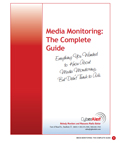
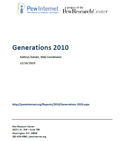
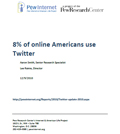
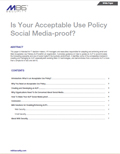
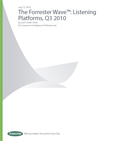
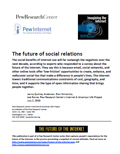
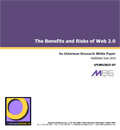
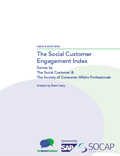
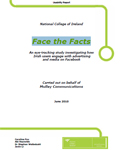
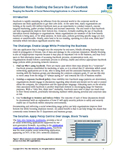
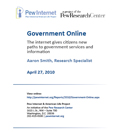

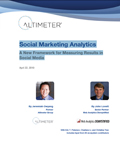
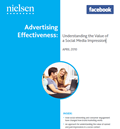

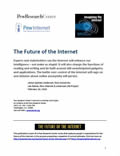

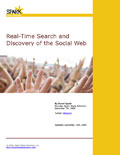

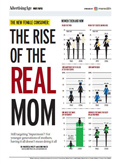






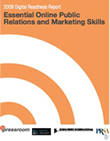
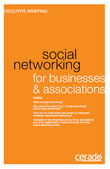


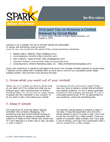
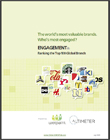
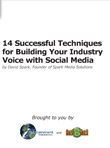


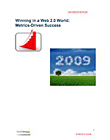
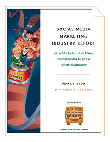
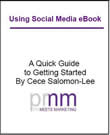


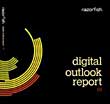

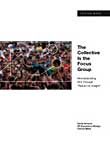



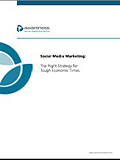

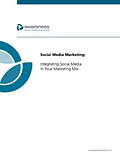



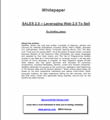

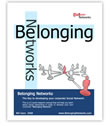



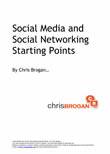
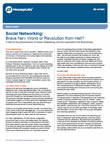
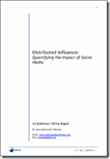




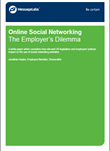

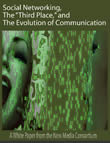



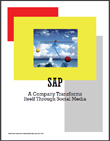





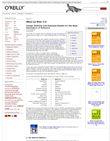
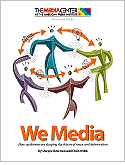
No comments:
Post a Comment